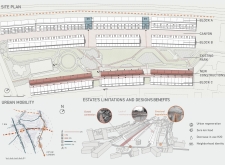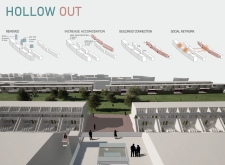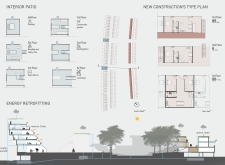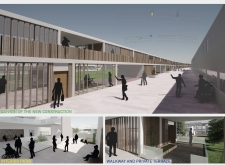5 key facts about this project
The setting in the City of London showcases a thoughtful approach to urban design, focusing on enhancing community identity while tackling existing infrastructural problems. The layout features interconnected blocks, known as BLOCK A, BLOCK B, CANYON, and BLOCK C. These elements come together to create a functional living environment that promotes sustainability and connectivity among residents.
Urban Mobility
A clear emphasis on urban mobility is present throughout the design. Pathways and open spaces are incorporated to facilitate movement across the site, allowing easy access between different areas. Each block is positioned thoughtfully to enhance pedestrian flow. This interconnectedness not only enables residents to navigate the space easily but also cultivates a sense of community and belonging.
Community Spaces
The design includes various communal spaces that encourage social interaction. Areas such as a kindergarten, craft workshops, an open library, and quiet reading rooms are designed to enrich the lives of residents. These spaces cater to diverse needs and promote educational and cultural engagement. Additionally, parks and community gardens provide essential greenery in the urban setting, fostering connections to nature.
Sustainable Practices
Sustainability is central in the overall design. A rainwater collection system is integrated to manage resources efficiently and reduce environmental impact. The concept of zero-kilometer food sourcing is significant, as it promotes local food production and minimizes carbon footprints. This attention to ecological responsibility enhances the livability of the area, demonstrating a commitment to both residents and the environment.
Interior Details
Unique design features enhance both functionality and aesthetics. The 'Canyon of the New Construction' serves as a notable element, incorporating an interior patio, walkways, and private terraces. These spaces invite outdoor activities while respecting residents' need for privacy. The balance of built and open areas provides a varied living experience. This design aspect not only meets practical needs but also enriches the urban context, offering a place for community members to connect with their surroundings.






















































